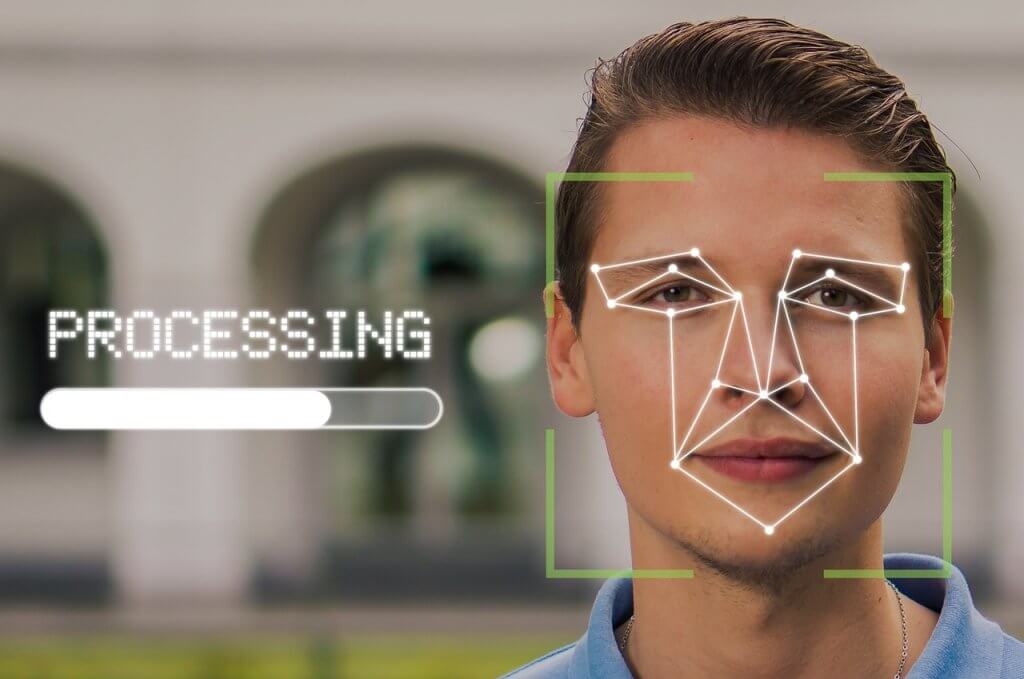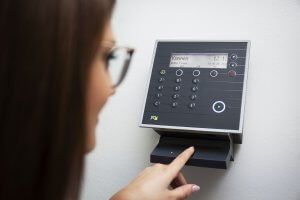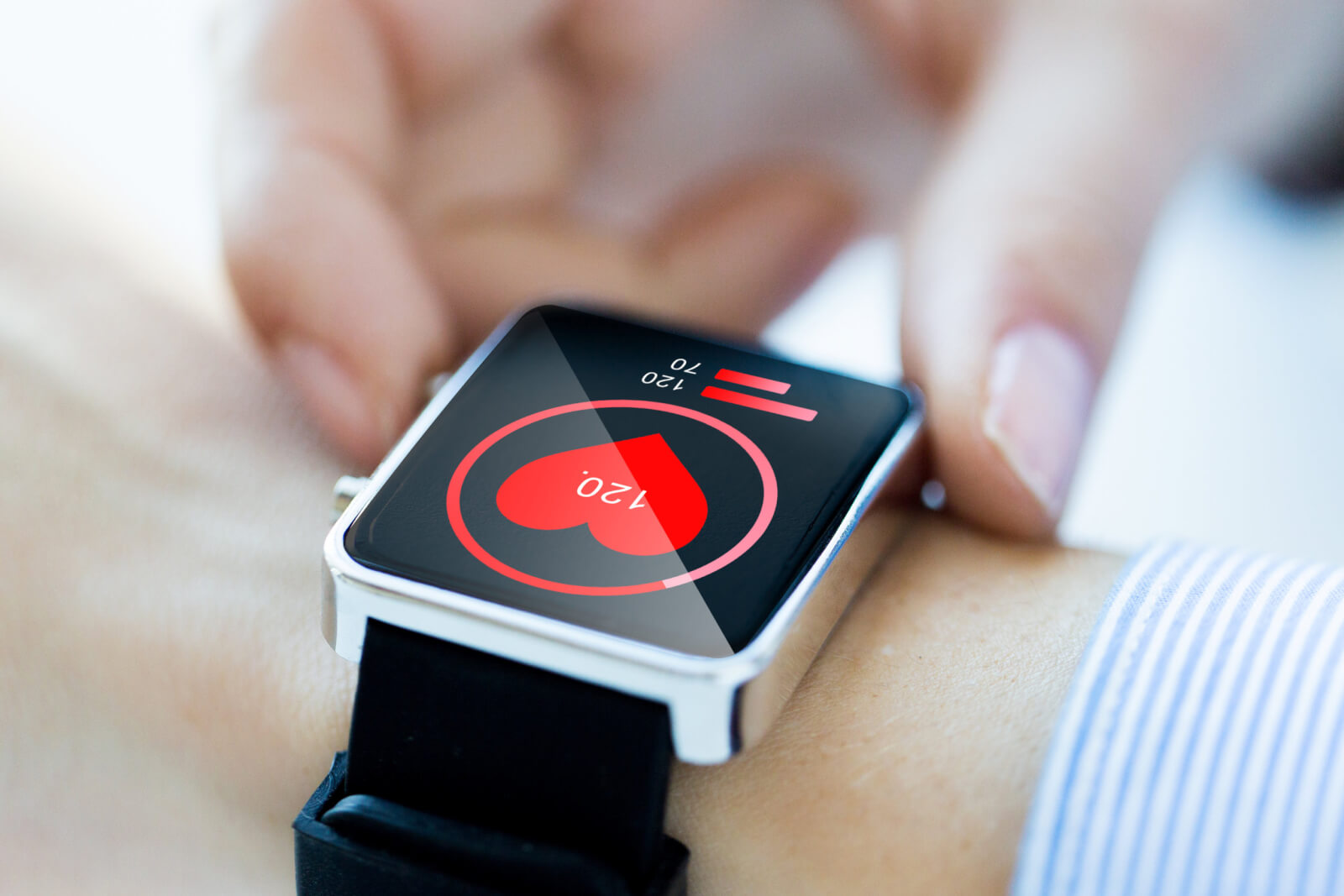After reading this article, you’ll:
- Understand the various biometric authentication methods available for mobile apps, including fingerprint, facial recognition, iris scanning, and behavioral biometrics, along with their relative strengths, limitations, and specific implementation considerations across iOS and Android platforms.
- Gain comprehensive knowledge of security best practices for implementing biometric authentication, including proper data storage techniques (like using Secure Enclave for iOS and Android Keystore), encryption requirements, and the importance of providing fallback authentication methods for reliability.
- Learn about the regulatory and compliance landscape surrounding biometric authentication, including GDPR requirements, industry-specific regulations like HIPAA and PCI-DSS, and critical considerations for accessibility and ethical implementation across diverse user populations.

The proliferation of mobile devices and the apps they support has transformed the way we interact with technology, work, and manage our personal lives. However, this surge in mobile app usage has been paralleled by an increase in security threats. From data breaches to identity theft, the vulnerabilities associated with traditional authentication methods like passwords have become increasingly apparent. Passwords are often weak, easily compromised, and cumbersome for users, leading to poor security practices like password reuse or overly simple passwords. This has pushed the industry towards more secure and user-friendly solutions.
What Is Biometric Authentication?
Biometric authentication refers to security processes that rely on the unique biological characteristics of an individual to verify identity. Historically, biometrics have been used in various forms, from fingerprinting in ancient China for record keeping to modern applications in security systems. Biometric systems analyze traits such as fingerprints, facial features, voice, or even behavioral patterns like keystroke dynamics, to grant access to devices, applications, or secure areas. By using these inherent human attributes, biometric authentication offers a level of security that is difficult to duplicate or steal compared to traditional methods.
Why Biometric Authentication Matters for Modern Apps
 Incorporating biometric authentication into mobile apps significantly enhances user experience by offering a seamless, quick, and intuitive method to verify identity. Instead of remembering multiple passwords, users can authenticate using their physical presence, which not only simplifies the login process but also reduces the friction that often leads to abandoning apps due to security fatigue.
Incorporating biometric authentication into mobile apps significantly enhances user experience by offering a seamless, quick, and intuitive method to verify identity. Instead of remembering multiple passwords, users can authenticate using their physical presence, which not only simplifies the login process but also reduces the friction that often leads to abandoning apps due to security fatigue.
Moreover, biometric authentication can boost consumer trust and credibility for app developers and service providers. It signals a commitment to safeguarding user data, which is crucial in today’s privacy-conscious environment. When users perceive their data and transactions as secure, they are more likely to engage with the app, share personal information, and make purchases, thereby enhancing loyalty and brand reputation. This trust is vital in an era where data breaches can severely damage a company’s image and financial standing.
Overview of Biometric Modalities
Biometric modalities encompass various methods of recognizing individuals based on their unique physiological or behavioral characteristics. Each modality has its own strengths, applications, and challenges, which are crucial for developers to understand when integrating biometric security into mobile applications.
Fingerprint Recognition
Fingerprint recognition has become one of the most widely accepted biometric methods due to its use in numerous devices over the past decade. Its familiarity among users contributes to high acceptance rates.
Use on Different Platforms:
- iOS (Touch ID): Apple’s Touch ID, introduced with the iPhone 5s, uses capacitive touch sensors to capture fingerprint images. It’s integrated into the hardware and software for secure authentication in apps and for device unlocking.
- Android Fingerprint APIs: Android offers developers access to fingerprint scanning through its APIs, allowing for biometric authentication across a broad range of devices with varying sensor quality.
Facial Recognition
- Apple’s Face ID: Utilizes a sophisticated TrueDepth camera system to create a detailed 3D map of the user’s face for authentication. It’s notable for its integration into the iPhone X and later models, providing a hands-free authentication method.
- Competing Solutions: Android devices have introduced various facial recognition systems, often relying on front-facing cameras and sometimes less accurate 2D recognition, though newer models are incorporating more advanced 3D capabilities.
3D vs. 2D Facial Recognition Methods:
- 3D Facial Recognition: Offers higher accuracy by mapping the contours of the face, making it less susceptible to spoofing with photographs or masks.
- 2D Facial Recognition: Relies on image capture and comparison, which can be less secure but is easier to implement on devices without specialized hardware.
Other Emerging Modalities
Voice Recognition:
- Use Cases: Ideal for hands-free operations, voice authentication can be used for device unlocking, banking transactions, or smart home control.
- Pros and Cons: While convenient, it’s vulnerable to background noise and voice mimicry. Its accuracy can vary based on voice quality and recording environment.
Iris Scanning:
- Use Cases: Often used in high-security scenarios due to its high accuracy.
- Pros and Cons: Provides excellent precision but requires specialized, often more expensive hardware, limiting its widespread adoption in consumer devices.
Behavioral Biometrics:
- Use Cases: Includes analysis of typing patterns, gait, or how one interacts with a device for continuous authentication.
- Pros and Cons: Offers ongoing security without user interaction but can be less reliable for unique identification due to variability in behavior.
Comparing Biometrics
- Accuracy Rates: Fingerprint and iris scanning generally lead in accuracy, followed by 3D facial recognition. Voice and behavioral biometrics might have lower accuracy but provide additional layers of security.
- Speed: Fingerprint and facial recognition are typically the fastest methods for user authentication in mobile contexts.
- User Acceptance: Fingerprint and facial recognition are most accepted due to familiarity and ease of use, while others might face resistance due to privacy concerns or perceived invasiveness.
Potential Pitfalls and Vulnerabilities:
- Fingerprint: Can be spoofed with high-quality replicas or lifted prints.
- Facial Recognition: Vulnerable to lighting conditions and can be tricked by high-quality masks or photos in 2D systems.
- Voice: Susceptible to recording playback or voice synthesis.
- Iris: Less common but can be bypassed with high-resolution images of the iris.
- Behavioral: Can be influenced by changes in user behavior or health conditions.
 The choice of biometric modality depends on the application’s security requirements, the context of use, user interaction model, and the hardware capabilities of the device. While no single biometric is foolproof, combining modalities in multi-factor authentication systems can significantly enhance security while catering to user convenience and acceptance. Developers must weigh these factors carefully when deciding how to implement biometric security in mobile apps.
The choice of biometric modality depends on the application’s security requirements, the context of use, user interaction model, and the hardware capabilities of the device. While no single biometric is foolproof, combining modalities in multi-factor authentication systems can significantly enhance security while catering to user convenience and acceptance. Developers must weigh these factors carefully when deciding how to implement biometric security in mobile apps.
Fingerprint Authentication
Fingerprint authentication has become a cornerstone in mobile security due to its balance of security, convenience, and user acceptance. It leverages the unique pattern of ridges and valleys on an individual’s fingertips to confirm identity, providing a secure yet user-friendly method of authentication.
How Fingerprint Authentication Works
Sensors and the Enrollment Process:
- Sensors: Mobile devices typically use optical, capacitive, or ultrasonic sensors to capture fingerprint images. Capacitive sensors, which detect electrical conductivity, are the most common in smartphones.
- Enrollment Process: Users initially “teach” the device their fingerprint by placing it several times on the sensor. The system analyzes these scans to create a mathematical model or template of the fingerprint, which is then stored for future comparison.
On-device Processing vs. Server-side Verification:
- On-device Processing: Most modern smartphones process fingerprint data locally due to privacy and performance reasons. The fingerprint image is never sent off the device; instead, only the template is stored.
- Server-side Verification: Less common in mobile apps due to privacy concerns, this involves sending encrypted fingerprint data to a server for authentication, typically used in enterprise environments for additional security layers.
Implementation on Different Platforms
iOS (Touch ID) Best Practices:
- Integration: Use the LocalAuthentication framework to access Touch ID without directly handling the biometric data.
- User Feedback: Ensure clear, immediate feedback on authentication status to enhance user experience.
- Error Handling: Prepare for scenarios where Touch ID might not work, offering alternatives like passcode entry.
Android Fingerprint APIs, Hardware Requirements:
- API Usage: Utilize the FingerprintManager API for pre-Android 9 and BiometricPrompt for Android 9 and above for a consistent UX.
- Hardware: Android devices must have a fingerprint sensor, which varies in quality and security features. Ensure compatibility with different sensor types.
Security Considerations
Data Encryption and Secure Storage:
- Android Keystore: Use Android’s hardware-backed keystore to securely store fingerprint templates, ensuring they are encrypted and tamper-resistant.
- iOS Secure Enclave: iOS processes fingerprint data within the Secure Enclave, a separate secure environment on the device’s chip, isolating it from the rest of the system.
Handling Fallback Methods:
- If fingerprint authentication fails or isn’t available, fallback to other authentication methods like PIN or password should be seamlessly integrated into the app to maintain user flow.
Pros and Cons
Pros:
- High User Acceptance: Most users are familiar with and comfortable using fingerprint authentication.
- Ease of Use: Quick and intuitive, improving user engagement by reducing authentication friction.
Cons:
- Hardware Dependency: Relies on having a functioning fingerprint sensor, which might be an issue for older devices or if the sensor gets damaged.
- Potential for Spoofing: While difficult, advanced methods like using lifted fingerprints or high-quality replicas can potentially bypass security.
Fingerprint authentication offers a balance of security and convenience that has made it a popular choice for mobile apps. By understanding the technology’s workings, implementing it correctly across platforms, and addressing its security aspects, developers can provide a reliable and user-friendly authentication experience. However, the potential for hardware issues and sophisticated spoofing attacks should not be underestimated, necessitating ongoing vigilance and innovative countermeasures.
Facial Recognition (Face ID and Beyond)
Facial recognition technology has transformed how we interact with our devices, offering a seamless way to authenticate identity without manual input. This section explores the nuances of this technology, focusing on Apple’s Face ID and its counterparts in the Android ecosystem.
Apple’s Face ID
Depth-Sensing Technology and the TrueDepth Camera System:
- Technology: Face ID uses the TrueDepth camera system, which includes an infrared camera, flood illuminator, and dot projector to create a detailed 3D map of the user’s face.
- Implementation: This setup works in various lighting conditions, even in complete darkness, by emitting 30,000 invisible infrared dots to map facial features.
Advantages of 3D Mapping Over 2D Facial Recognition:
- Accuracy: 3D mapping provides higher accuracy and resistance to spoofing compared to 2D methods which can be fooled by photos or masks.
- Security: The complex data collected allows for more secure authentication, reducing false positives and enhancing user privacy.
Facial Recognition for Android & Cross-Platform Solutions
Available APIs and SDKs:
- Google ML Kit: Offers machine learning capabilities for developers to integrate facial recognition features. It’s cloud-based or on-device, providing flexibility based on the need for speed or accuracy.
- Third-Party Libraries: Numerous SDKs from companies like Microsoft or Kairos provide developers with tools to implement facial recognition, often with support for cross-platform deployment.
Performance Considerations Across Diverse Android Devices:
- Hardware Variability: Android devices vary in camera quality and processing power, impacting recognition performance. Developers should optimize for different device capabilities.
- Software Updates: Ensuring the app works with various versions of Android requires careful version handling and testing.
Privacy & Security Aspects
How Facial Data is Stored and Protected:
- Data Storage: On both iOS and Android, facial data is typically stored in secure enclaves or hardware-backed keystores, ensuring it’s encrypted and inaccessible to apps or even the OS itself.
- Data Minimization: Only mathematical representations (templates) of faces are kept, not actual images, reducing privacy risks.
Navigating User Consent and Ethical Considerations:
- Consent: Users must explicitly opt into using facial recognition, with clear explanations of what data is collected and how it’s used.
- Ethical Use: Developers should avoid collecting unnecessary data, ensure transparency, and respect user privacy, aligning with regulations like GDPR.
Pros and Cons
Pros:
- Hands-Free Convenience: Users can unlock devices or authenticate actions without physical interaction, enhancing accessibility.
- User Experience: Improves the user experience by reducing the need for manual input.
Cons:
- Lighting/Environment Dependencies: Despite improvements, varying light conditions or wearing glasses can sometimes affect recognition accuracy.
- Potential for Spoofing: Although much harder with 3D systems, advanced techniques like using high-quality masks or 3D-printed faces could theoretically bypass security, though this risk is diminishing as technology evolves.
Facial recognition, particularly with advancements like Apple’s Face ID, sets a new standard for authentication in mobile devices. The transition from 2D to 3D recognition has significantly bolstered security and user experience. For Android and cross-platform solutions, developers must navigate a landscape of varying hardware capabilities while prioritizing privacy and ethical data handling. Despite some challenges, facial recognition remains a powerful tool for enhancing security and convenience in mobile applications.
Other Emerging Biometric Technologies
Beyond fingerprints and facial recognition, several other biometric technologies are emerging, each with unique applications and challenges. These methods aim to provide alternative or supplementary ways to authenticate users, enhancing security and usability in diverse contexts.
Voice Recognition
Use Cases:
- Hands-Free Operations: Ideal for scenarios where physical interaction with a device is not possible, like driving, cooking, or for individuals with mobility impairments.
- Accessibility: Enhances device usability for those with visual impairments or motor disabilities, supporting voice commands for navigation, authentication, or device control.
Susceptibility:
- Voice Imitation: While voice recognition has improved, it’s still vulnerable to mimicry or synthetic voice generation, though advanced systems can detect these attempts using liveness detection.
- Background Noise: Environmental sounds can interfere with voice recognition, requiring robust noise cancellation features to maintain accuracy.
Iris Scanning
Higher Accuracy:
- Offers one of the highest accuracy rates among biometric methods due to the unique patterns of the iris, which remain stable over time.
Hardware Requirements:
- Expensive Hardware: Requires specialized cameras with high resolution and infrared capabilities, making it less common in consumer devices due to cost.
Adoption Hurdles:
- Device Compatibility: Not all devices are equipped for iris scanning, limiting its application primarily to high-security environments or premium devices.
- User Comfort: Some users might feel uncomfortable or find the scanning process invasive.
Behavioral Biometrics
Types:
- Typing Patterns: Analyzing keystroke dynamics like speed, rhythm, and frequency.
- Gait Analysis: Identifying individuals by their walking style, useful for continuous authentication in wearable devices.
- Device Interaction Style: Monitoring how a user interacts with their device, including swipes, screen touches, and even how they hold their phone.
Advantages:
- Continuous Authentication: Unlike one-time checks, behavioral biometrics can authenticate users continuously in the background, offering security without interrupting user experience.
- Adaptive Security: Can adjust security levels based on behavior changes, enhancing protection against unauthorized access.
Multi-modal Biometric Solutions
Combining Biometrics:
- By using multiple biometric methods (e.g., face and voice, or fingerprint and iris), security can be significantly enhanced, as it’s harder to spoof multiple traits at once.
Balancing Complexity and User Experience:
- User Experience: Multi-modal systems must be designed to not overly complicate the authentication process, ensuring they remain user-friendly.
- Security vs. Convenience: The challenge lies in integrating these systems without significant performance overhead or user inconvenience, often requiring sophisticated algorithms to manage authentication seamlessly.
Emerging biometric technologies like voice, iris, and behavioral biometrics offer promising avenues for enhancing security in mobile applications. Each has its unique strengths, particularly in scenarios where traditional methods fall short. However, they also come with hurdles like hardware dependency, privacy concerns, and susceptibility to certain attacks. Multi-modal approaches combine the best of these technologies, providing robust security while striving to maintain a straightforward user experience. As these technologies mature, they will likely see broader adoption, reshaping how we think about and implement security in the digital world.
Best Practices for Implementing Biometric Authentication
Implementing biometric authentication in mobile apps involves more than just choosing a technology; it requires careful consideration of security, user experience, and system reliability. Here are some best practices developers should follow:
Data Security & Encryption
Storing Biometric Data:
- Locally: Biometric data should ideally be stored on the device itself rather than in the cloud to minimize data exposure.
- iOS: Use the Secure Enclave, a dedicated hardware component designed to store and process sensitive data securely.
- Android: Implement the Android Keystore system, which provides a secure storage environment, leveraging hardware-backed security if available.
Cloud Storage:
- If cloud storage is necessary, ensure the data is heavily encrypted, use tokenization to replace sensitive data with non-sensitive equivalents, and adhere to strict access controls.
Leveraging Secure Device Features:
- Use device-specific secure environments like the Trusted Execution Environment (TEE) on Android or Secure Enclave on iOS to process biometric data, preventing it from being accessed by other parts of the system or compromised apps.
User Experience (UX) Design Considerations
Onboarding Flows:
- Initial Enrollment: Design clear, intuitive steps for users to enroll their biometrics, providing feedback on the quality of the input (e.g., “Move your finger” for fingerprint or “Move head” for face recognition).
- Education: Briefly educate users on how biometric authentication works to build trust and understanding.
Privacy Communication:
- Transparency: Clearly explain how biometric data is used, stored, and protected. Inform users about privacy policies regarding their biometric data.
Fallback Options & Error Handling
Fallback Authentication:
- Always offer alternatives like PIN or password for users who might have issues with biometrics (e.g., wet fingers for fingerprint scanning or wearing makeup for facial recognition).
- Graceful Degradation: Ensure the app remains functional if biometric authentication fails, transitioning smoothly to other authentication methods.
Handling False Positives/Negatives:
- Implement mechanisms to handle authentication failures gracefully, possibly allowing a few attempts before falling back to another method.
- Provide user-friendly error messages that guide users on how to correct authentication attempts.
Testing & Quality Assurance
Environmental Simulation:
- Test under different lighting conditions, noise levels (for voice), or with users wearing accessories or makeup (for facial recognition) to ensure reliability.
Device and OS Compatibility:
- Stress-Testing: Perform extensive testing across various devices, including older models and those with different sensor capabilities, to ensure cross-compatibility.
- OS Versions: Account for changes in biometric APIs or security protocols across different OS versions.
Automated and Manual Testing:
- Use automated tests for repetitive checks on biometric authentication flows while maintaining manual tests for nuanced user interactions and edge cases.
Implementing biometric authentication effectively requires a balance of security, privacy, and user experience. By securing biometric data with the best practices for encryption and storage, designing UX that is both informative and forgiving, and ensuring thorough testing, developers can create a robust and user-friendly authentication system. This not only enhances security but also builds user trust and satisfaction, which are crucial for the success of any app employing biometric technology.
Regulatory and Compliance Challenges
Implementing biometric authentication in mobile apps must navigate a complex landscape of regulations to ensure legal compliance and protect user rights. This section discusses key regulatory considerations developers should be aware of:
GDPR & Global Data Protection Laws
Storing and Processing Biometric Data Responsibly:
- Data Protection: Biometric data, classified as sensitive under laws like GDPR, requires stringent protection. It should only be stored and processed with robust security measures in place.
- Data Minimization: Use biometric data only for the specific purpose of authentication and not for any other purposes without explicit consent.
Explicit User Consent:
- Consent Requirement: Users must give explicit, informed consent before their biometric data is collected or used. This consent must be as easy to withdraw as it is to give.
- Transparency: Clearly communicate what biometric data is collected, how it’s used, stored, and for how long. Users should understand the implications of providing their biometric information.
Industry-Specific Regulations
Healthcare (HIPAA):
- For apps in healthcare, biometric data must comply with HIPAA, which imposes strict rules on how personal health information is handled, including biometric identifiers.
Payment Apps (PCI-DSS):
- Payment Card Industry Data Security Standard (PCI-DSS) applies to apps handling payment information. Biometric authentication must be part of a secure environment that protects against data breaches.
Aligning with Standards:
- Ensure biometric systems align with industry-specific security standards, which might include regular audits, encryption protocols, or specific storage practices for sensitive data.
Accessibility and Ethical Considerations
Diverse User Populations:
- Inclusivity: Biometric systems must work across different demographic groups, considering variations in skin color, age, or physical conditions that might affect recognition accuracy.
- Adaptability: Provide alternative authentication methods for those for whom biometrics might fail, ensuring no user is excluded due to the technology’s limitations.
Handling Edge Cases:
- Disability Access: Consider users with disabilities who might not be able to use certain biometric modalities (e.g., voice recognition for those with speech impairments, or facial recognition for those with facial differences).
- Ethical Use: Avoid biases in biometric algorithms that could unfairly impact certain groups. Regularly update systems with diverse data sets to improve accuracy and fairness.
Navigating the regulatory and compliance landscape for biometric authentication is critical for legal operation and ethical practice. Developers must not only comply with broad data protection laws like GDPR but also adhere to industry-specific regulations that focus on the secure handling of sensitive information. Moreover, ensuring that biometric systems are accessible and ethically sound is vital to avoid discrimination and provide equitable service. By addressing these challenges proactively, developers can foster trust and ensure that biometric authentication enhances security without compromising user rights or privacy.
FAQs on Biometric Authentication in Mobile Apps
What is biometric authentication and why is it becoming more important for mobile apps?
Biometric authentication is a security process that verifies identity using unique biological characteristics like fingerprints, facial features, voice, or behavioral patterns. It’s gaining importance because traditional password-based systems are increasingly vulnerable to security breaches and offer poor user experience. Biometric authentication provides a more secure, user-friendly alternative that reduces friction in the authentication process while enhancing security through unique biological identifiers that are difficult to duplicate or steal.
How does facial recognition differ between iOS (Face ID) and Android devices?
Apple’s Face ID uses a sophisticated TrueDepth camera system that creates a detailed 3D map of the user’s face using 30,000 invisible infrared dots, making it highly secure and accurate even in dark conditions. Android devices typically use varying approaches, with some relying on simpler 2D recognition through front-facing cameras, though newer models are incorporating more advanced 3D capabilities. The key difference lies in the hardware implementation, with Apple’s system generally offering higher security through its dedicated 3D mapping technology, while Android’s implementation varies based on device manufacturer and model.
What are the best practices for storing biometric data securely?
Biometric data should ideally be stored locally on the device rather than in the cloud. For iOS devices, developers should use the Secure Enclave, a dedicated hardware component for secure data storage and processing. On Android, the Android Keystore system should be implemented, preferably with hardware-backed security. If cloud storage is absolutely necessary, the data must be heavily encrypted, tokenized, and protected with strict access controls. Additionally, only mathematical representations (templates) of biometric data should be stored, never the actual biometric images or patterns.
What should developers consider when implementing fallback authentication methods?
Developers should always provide alternative authentication methods like PINs or passwords for situations where biometric authentication might fail or be unavailable. The system should gracefully degrade to these alternatives while maintaining security. It’s important to implement clear error messaging that guides users when authentication fails, and the transition between biometric and fallback methods should be smooth and intuitive. The system should also allow a reasonable number of biometric authentication attempts before requiring the fallback method.
What are the key regulatory requirements for implementing biometric authentication?
Under regulations like GDPR, biometric data is classified as sensitive data requiring stringent protection. Developers must obtain explicit user consent before collecting or processing biometric data, and users must be able to withdraw this consent easily. For healthcare apps, HIPAA compliance is mandatory, while payment apps must adhere to PCI-DSS standards. The implementation must also consider accessibility requirements, ensuring the system works across different demographic groups and providing alternatives for users who cannot use certain biometric methods. All data collection, storage, and processing must be transparent to users and include clear privacy policies.





